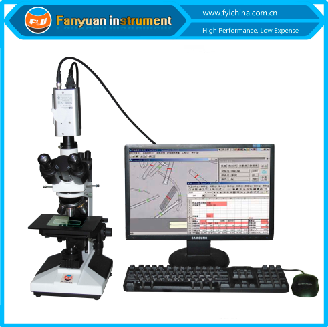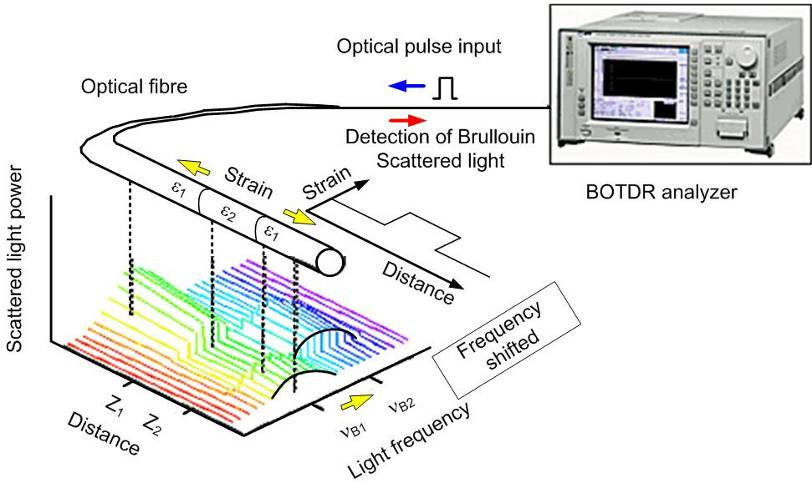Optimize Your Fiber Optic Performance: Understanding Optical Fibre Size Analyser Technology
The efficiency of fibre optic systems is seriously influenced by the precision of their diameter, a variable commonly forgot in the pursuit of optimal signal stability. Recognizing the technology behind optical fibre size analysers exposes the intricate balance between measurement precision and production top quality. These gadgets not only boost conformity with industry requirements but additionally provide real-time understandings that can preemptively resolve potential issues. Nonetheless, the effects of their use expand beyond simple measurement; they can essentially modify the landscape of fiber optic efficiency. What variables should one take into consideration to harness their full potential?
Relevance of Optical Fibre Size
The diameter of optical fiber plays an essential duty in figuring out the efficiency and performance of communication systems. Alternatively, smaller sized diameters tend to support less modes, which can improve signal clarity and reduce crosstalk.

Additionally, comprehending the diameter's implications can cause cost savings by decreasing the requirement for signal amplification and repeaters in substantial networks (optical fibre diameter analyser). Finally, the relevance of optical fiber diameter can not be overstated, as it directly impacts the general efficiency and dependability of modern communication systems

Just How Size Influences Signal Quality
Signal top quality in optical fiber systems pivots dramatically on the size of the fibre. The diameter influences numerous key criteria, consisting of attenuation, transmission capacity, and modal dispersion. A smaller sized diameter can cause greater depletion rates, resulting in signal loss as light journeys with the fiber. This depletion can compromise the honesty of the transmitted data, resulting in a decline in signal quality, particularly over lengthy ranges.
Alternatively, larger diameters typically allow for improved light capture and lowered modal diffusion, boosting signal clearness. In multimode fibers, a bigger core diameter can support numerous light modes, yet it might also introduce intermodal diffusion, which can deteriorate signal high quality. For that reason, selecting the ideal fiber diameter is essential for attaining the preferred performance in particular applications.
Moreover, the communication in between the fibre diameter and the wavelength of the light utilized plays a crucial function in figuring out the effective transmission distance and overall signal stability. Thus, recognizing how fibre diameter impacts signal high quality is important for network developers and engineers making every effort to enhance optical fiber systems for reliable, high-speed data transmission.
Overview of Diameter Analyser Modern Technology
In lots of optical fibre production processes, accurate measurement of fiber diameter is necessary for making sure consistent efficiency and top quality (optical fibre diameter analyser). Size analysers are sophisticated tools developed to evaluate the physical dimensions of optical fibres with high precision. They use innovative optical and laser technologies to measure the size, ovality, and concentricity of the fibre, therefore offering vital information for quality assurance
These analysers can operate in-line during the manufacturing procedure or as part of off-line screening procedures. In-line systems enable real-time monitoring, enabling producers to readjust parameters instantly, consequently maintaining ideal production problems. Off-line analysers, on the other hand, offer comprehensive examinations of sets, ensuring that any kind of inconsistencies from defined tolerances are identified and resolved.
Diameter analysers dramatically add to the decrease of problems in optical fibres, enhancing general item dependability. By constantly gauging crucial parameters, these technologies assist in conformity with industry criteria and specifications. As the need for high-performance optical fibres proceeds to climb, the role of size analysers comes to be progressively important in attaining the desired quality and performance criteria in fiber optic systems.
Secret Features of Fibre Diameter Analysers
Although different models of fibre diameter analysers exist, they commonly share a number of key features that boost their capability and dependability. One of one of the most significant features is high-resolution measurement capacities, which guarantee exact size analyses, vital for preserving high quality control in fibre manufacturing. Furthermore, several analysers include sophisticated optical sensors designed to find minute variations in fiber diameter, therefore supplying invaluable information for procedure optimization.
An additional important feature is real-time surveillance, enabling operators to get instant feedback on fiber diameter throughout the production process (optical fibre diameter analyser). This capability facilitates rapid changes and minimizes the probability of defects. Numerous analysers likewise come furnished with straightforward user interfaces, enabling operators to conveniently browse with data and setups outcomes
In addition, durable information storage and evaluation functionalities reference are crucial for tracking historical efficiency fads and guaranteeing compliance with market criteria. Some models also offer connectivity alternatives for integration into existing manufacturing control systems, improving general operational efficiency. Portable and portable styles enable for adaptable release within manufacturing atmospheres, making sure that high quality guarantee procedures are smooth and reliable. These functions jointly add to the efficacy of fibre size analysers in optimizing fibre optic efficiency.
Ideal Practices for Fiber Optimization

First, regular calibration of optical fiber diameter analysers is necessary. This makes certain precise measurements and minimizes potential disparities that might impact efficiency. Next off, preserving a clean workplace is crucial; dirt and impurities can bring about indicate destruction.
Furthermore, it is very important to select fibres that fulfill details application demands. This entails examining variables such as depletion, bandwidth, and environmental problems. Appropriate installation strategies ought to also be stuck to, including staying clear of sharp bends and too much stress, which can endanger fiber honesty.
Furthermore, using advanced monitoring systems can assist in real-time performance evaluations, enabling prompt identification of concerns. Routine screening and maintenance ought to be performed to guarantee that fibres continue to be within optimum functional parameters.
Last but not least, training employees on the most recent fibre click here for more info optimization technologies and methods will certainly enhance their capacity to carry out reliable approaches. By following these ideal techniques, organizations can considerably improve the performance and life expectancy of their optical fibre systems, guaranteeing reliable communication and data transfer.
Final Thought
To conclude, the assimilation of optical fibre size analyser modern technology is critical for making the most of fibre optic efficiency. By making certain accurate measurements of fiber dimensions, these analysers significantly enhance signal top quality and lower losses throughout data transmission. Normal calibration and upkeep of the analysers are vital to support ideal efficiency and conformity with market requirements. Ultimately, the application of this innovation facilitates boosted information transmission prices and reinforces signal stability, contributing to the total efficiency of fibre optic systems.
Signal quality in optical fibre systems hinges significantly on the size of the fibre.In lots of optical fibre production processes, precise measurement of fibre diameter is essential for ensuring constant performance and quality. As the need for high-performance optical fibres proceeds to increase, the role of size analysers ends up being increasingly important in achieving the desired top quality and efficiency criteria in fiber optic systems.
These attributes jointly add to the effectiveness of fiber diameter analysers in maximizing fibre optic efficiency.
In verdict, the combination of optical fiber diameter analyser innovation is essential for taking full advantage of fiber optic performance.